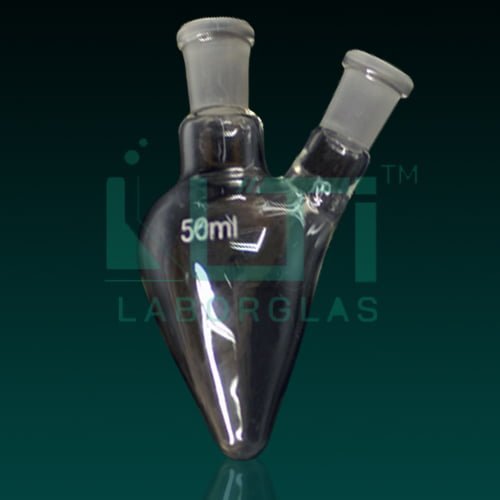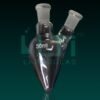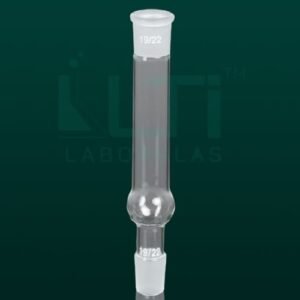- Made from ASTM E-438 Type 1, Boro 3.3 heat resistance glass
- Complies with DIN 12383
- Side neck at an angle of 25°
| PART No. | Capacity (ml) | Centre Size | Side Socket | Overall Height (mm) | PACK Qty. |
| 5710-50 | 50 | 14/23 | 14/23 | 100 | 1 |
| 5710-100 | 100 | 14/23 | 14/23 | 130 | 1 |
Here are some common uses for a Pear Shape Flask with Two Necks according to DIN standards in a laboratory:
- Parallel Reactions: The two necks allow for the setup of parallel reactions, enabling researchers to conduct multiple reactions simultaneously.
- Distillation and Fractionation: The flask is suitable for distillation setups, where different components of a mixture can be collected through the individual necks. This is particularly useful for fractionation processes.
- Refluxing: Each neck can be used for reflux setups, allowing for the refluxing of multiple reactions simultaneously.
- Simultaneous Sampling and Analysis: Researchers can use the individual necks for simultaneous sampling or the addition of reagents, facilitating real-time analysis or monitoring of reactions.
- Temperature Control Experiments: One or both necks can be utilized for inserting thermometers or temperature probes, allowing for precise temperature control in each reaction.
- Gas Inlet/Outlet: One or both necks can be used as gas inlets or outlets, making the flask suitable for reactions involving gaseous reactants or by-products.
- Complex Reaction Setups: The multiple necks offer flexibility for designing complex experimental setups that involve multiple reactants, catalysts, or monitoring devices.
- Multi-step Synthesis: The flask can be used for multi-step synthesis, where different steps of a synthesis process can be conducted concurrently in separate compartments.







